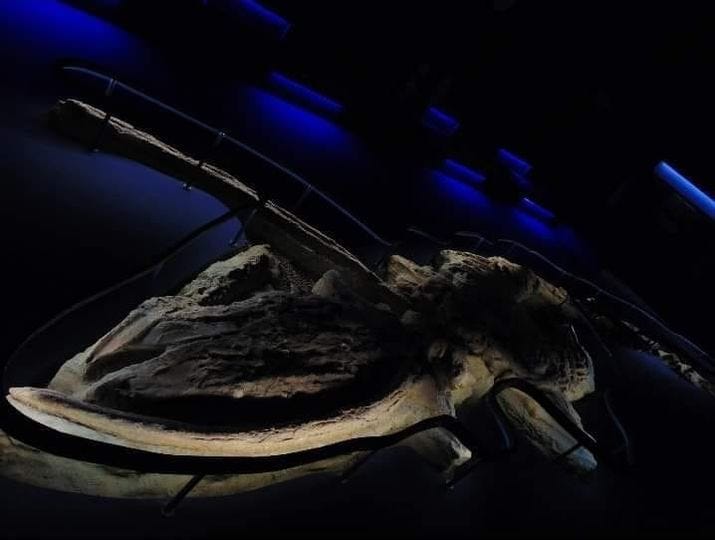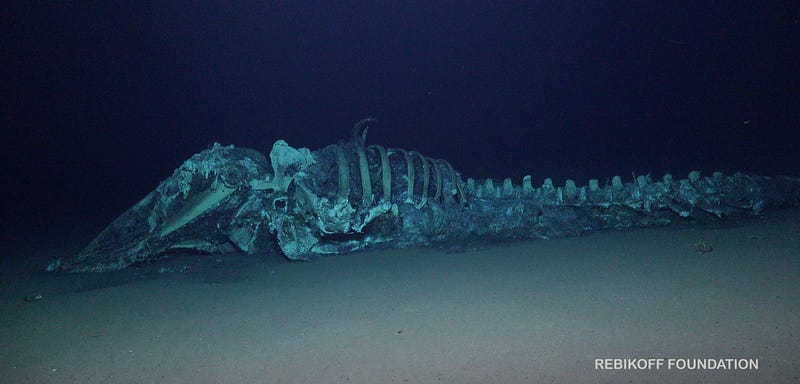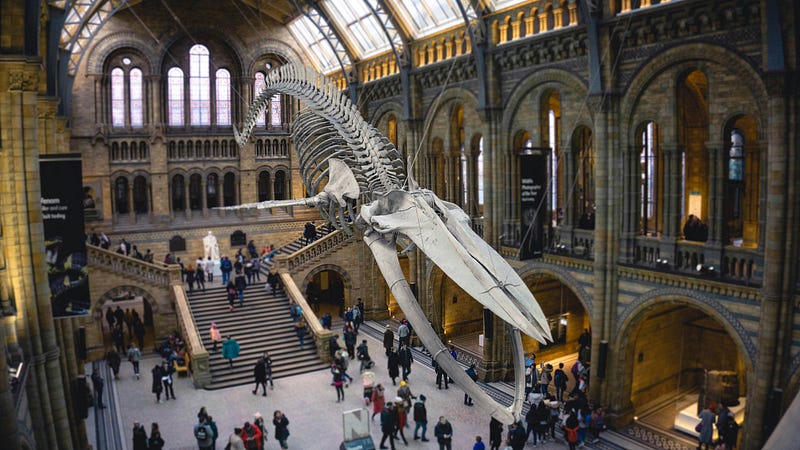Title: Unraveling Whale Death: Insights from Fossils and Ecosystems
Written on
Chapter 1: The Fascinating Transformation of Whales After Death
Whales and other marine organisms undergo remarkable ecological and paleontological changes after they pass away, changes best understood through the examination of museum specimens.

Ph. Mattia Paparo (National History Museum of Florence, Italy)
Tuscany, an Italian region rich in paleontological wonders, boasts significant finds, including the renowned Whale of Orciano Pisano located in Pisa province. Millions of years ago, this area was submerged underwater, as indicated by geological and paleontological investigations that frequently uncover fossil remains of sharks, shells, and marine mammals.
In 2007, a whale was unearthed from the hills of Orciano Pisano, now displayed in a dedicated section of the Natural History Museum of Florence, which includes an exhibit that recreates the whale's original marine habitat. This specimen, dating back approximately 3 million years to the Pliocene epoch, measured around 10 meters in length. The museum's exhibit captivates visitors, allowing them to experience the whale's environment through carefully designed lighting and colors reminiscent of a marine setting. The inclusion of photographs of marine life further enriches the sensory experience. Overall, it is a stunning multimedia presentation.
This discovery is crucial as it sheds light on the decomposition process of whales, the organisms that thrive on their remains, and various related ecological phenomena that we will delve into shortly. Notably, alongside the whale, researchers found remains of sharks, rays, bivalves, and gastropods that had fed on the carcass, all located at a depth of about 100–150 meters.
Let's examine this study more closely. This exploration leads us into the realm of taphonomy, a branch of paleontology that investigates the journey of an organism from death to fossilization and its eventual discovery. This research provides insights into what occurs with whales post-mortem and the ecological roles played by various organisms in this "new" ecosystem that forms.
The first scenario involves the carcass washing ashore, swelling until it bursts due to internal gases. The second scenario sees the carcass sinking to the ocean floor, where a (paleo)community begins to develop around it, leading to a succession of communities over time (ecological successions).
Ecologically, a deceased whale serves as a vital food source for numerous organisms, particularly in the nutrient-scarce seabed environment, which resembles a desert. This process is characterized by various ecological phases, each defined by different species and trophic networks, sometimes overlapping.

This juvenile sperm whale, found near San Jorge Island in Portugal, was featured by a team from the BBC in Blue Planet II and became part of an extreme deep-sea experiment. Photo by the Rebikoff-Niggeler Foundation. Text by Hakai Magazine.
Examining the diverse phases based on trophic levels reveals several interesting stages:
- Mobile Scavengers: This initial phase can last from months to several years, characterized by the presence of sharks, hagfish, and various invertebrate scavengers that can consume whale tissue at an astonishing rate of about 50–60 kg per day.
- Opportunist Stage: As the first phase progresses, most of the whale's tissues are depleted, leaving only exposed bones. The sediment becomes rich in organic matter, attracting crustaceans and polychaetes, with the notable "bone-eating" polychaete known as Osedax leading this stage.
- Sulfophilic Stage: During this stage, sulfate from seawater infiltrates the bones, initiating a process of sulfate reduction conducted by anaerobic bacteria. These bacteria break down the lipids in the bones, generating hydrogen sulfide, which diffuses into the surrounding water and sediments. Sulfur-oxidizing bacteria then utilize this hydrogen sulfide, converting inorganic compounds into organic matter, consequently supporting invertebrates such as worms and mussels that feed on them. These invertebrates become prey for larger organisms like lobsters, continuing the food chain.
Curious about the duration of this entire process? It spans roughly 50 years. Additionally, once the organic material is consumed, the bones can form a reef-like structure, creating an "oasis in the desert" that is populated by suspension-feeding organisms.
The Whale of Orciano Pisano significantly enhances our understanding of Pliocene marine life and illustrates the complex ecological processes that occur after death in deep-sea environments. The exhibit at the Natural History Museum of Florence not only offers a glimpse into a prehistoric era but also serves as a vivid, multi-sensory exploration into the ocean's depths, where life and death intertwine through a complex sequence of ecological successions.

Photo by Y K on Unsplash
By investigating the stages of decomposition and their ecological consequences, we gain valuable insights into the resilience and adaptability of marine ecosystems. Visitors who experience the exhibit leave with a deeper understanding of the unseen processes that shape our natural world, all thanks to a whale long gone, which continues to educate and inspire.
Published in Fossils et al. Follow to learn more about Paleontology.